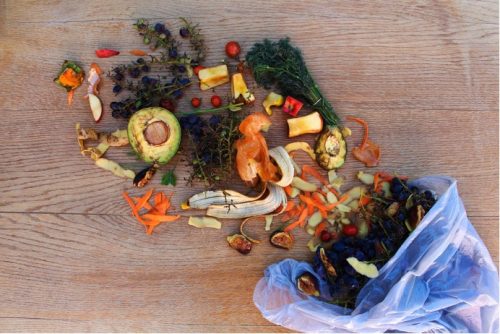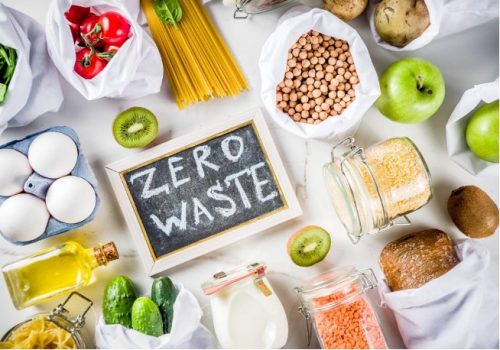
Because so many major companies operate on a large scale supply chain, it’s easy for a lot of products to get wasted during the process. Unfortunately, when it comes to supply chain companies, most of the individual parts of the chain are unaware of what is happening in other parts of the process. This can lead to miscommunication and a lot of additional waste. When you educate yourself on all the steps in your supply chain, you’ll have a better chance of reducing waste. There are tons of ways to eliminate waste from your process, including buying packing from a company that offers eco-friendly products and donating items that will not be able to be sold in the near future. Learn more about reducing food waste and do your part to help the environment.
Why Reduce Food Waste in the Supply Chain?
It has been estimated that about 1.3 billion tons of food are wasted throughout the world on an annual basis—a vast amount of products that could be put to better use. As a company involved in the supply chain, you should be concerned about these numbers because not only does this waste have negative effects on the environment, but it also loses your business money. When you integrate types of technology that can prevent the waste before it happens, you can increase profits and decrease environmental effects. When a product is still able to be sold but will not make it to its intended destination in time before expiration, donate your items to avoid simply tossing them in the trash.
How to Reduce Food Waste
Share Statistics on Food Waste with the Company
The greater the level of awareness that people have about food waste, the more inclined they will be to take action. Gather some statistics on national and global food waste in terms of its effects. Then, pull together specific figures from your own company in terms of food waste to show stockholders and upper management how your company is adding to the problem. These numbers can very effectively show how the company is also losing money from waste. When people are presented with specific information on how a problem is directly impacting their business–and their profits–action is more likely to be taken.

Learn More About the Supply Chain
If you aren’t sure how the supply chain that you’re involved in works, you need to research and learn more about the process as you may be able to identify areas that could be improved to reduce waste. Most companies involved in a supply chain exist in their own bubble, unaware of how other aspects of the process work. Understanding every step is the key to solving the problem of food waste.
Use the Right Type of Packaging
Food waste can impact the environment in a number of ways. Sometimes negative environmental effects take place during the manufacturing process. When these products are created and simply thrown away, it begs the question: What was the purpose? When we’re producing greenhouse gases that are negatively impacting our planet and our health, but the products that are causing this are being wasted, it all seems a bit pointless. So, we want to try reducing the environmental effects of the supply chain at every level. Using high-quality eco-friendly packaging materials can help with this process, as well as help properly store food to avoid it going bad and contributing to the level of waste.
Focus on Maintaining the Proper Conditions
As food travels from many different areas throughout the supply chain process, it’s easy for it to become exposed to conditions that negatively affect the quality or safety, rendering it unable to be sold to consumers. No matter which part of the chain you’re involved with, there needs to be a consistent focus on maintaining the ideal temperatures and conditions to keep food as fresh as possible. This will greatly lower the number of items that are disposed of simply because they were not properly treated during transportation.
Use Biosensors to Identify Contamination
Technology is continually enhancing the efficiency of many different industries. Biosensors are a unique new type of tech used in food production that can quickly identify and alert people if any type of contamination or other issue is present in food products. Of course, if the contamination is there, this item must be thrown away, but it can help to quickly spot a problem before it happens to other products and eliminate the issue at its source. The fewer examples of contamination, the greater the safety of the consumer and the lower the amount of food waste.
Implement Food Waste Analytics
A growing number of programs exist to analyze your supply chain and how food waste is affecting you. These programs are able to track your food waste numbers, which can be helpful to present to the company when trying to find a solution–and it also alerts a business when products are approaching their expiration date. If a product’s expiration date is too soon to get it out and available to the consumer in a reasonable amount of time, you can still reduce waste by donating your products. Although the shelf life will not be as long, the products are still safe for consumption and will avoid being thrown in the trash.

Pay Attention to Your Food Waste Numbers
Now that you know some of the best ways to reduce the amount of food waste that takes place in your supply chain, you can implement some of these strategies. From a business standpoint, decreasing waste saves you money because you’re not spending capital to create products that are simply thrown away. But, from an environmental standpoint, you’re also helping to improve living conditions and following a more green lifestyle. Make your business as eco-friendly as possible with the right shipping materials.
Interesting Related Article: “How to Reduce Food Waste in Your Restaurant By Using a Commercial Cooler“

